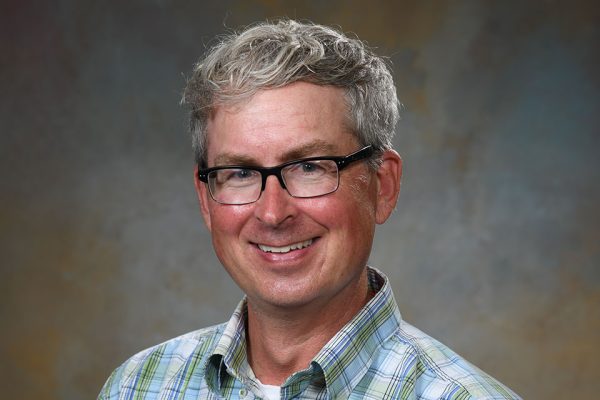Waiting on 2026: Donald Muench Ponders on Fisher’s History and When a 75th Anniversary Should Be Celebrated
When Dr. Donald Muench came to Fisher in September 1951, Kearney Hall was still in its bare bones, and an athletics center was no more than a fantasy. Even some of the doors were lackluster, the backdoor was simply “a big plywood board with hinges on it. […] Painted pink.” But for this pioneer class (who briefly called themselves the “Knights of the Pink Door”), there was a certain excitement in the air that made Fisher worth trying.
“All you need in a college that purports to be in the liberal arts…is a place to sit,” Muench said. Additionally, the library’s convenient location in Kearney and the large donations of books made learning easily accessible. But Muench’s education didn’t stop at St. John Fisher.
“After I graduated, I took a couple of [graduate] courses at the U of R. But it was the day of the draft, the Korean War draft, and I got drafted. So, I had two years in the army, which was fine because it was a civilian-type job that I had. And I took a couple of graduate courses while I was in the army. And then, when I got out, I went to St. John’s University in New York and that’s where I got my master’s degree.”
After his master’s, Muench was offered two positions to continue his career in education. He decided to accept an offer from the Naval Academy. “It was a great experience there, being a new guy, we had a lot of support for our teaching. Every week, we met senior professors to talk about what we should cover for the next week and how we might approach teaching this material, and so forth. For that whole first year with them, teaching the courses and then getting that help from senior professors, it was super.”
“I’d come back up here every year, come up and visit the family and stop off at campus. And one of the people I’d met here was Father Joe Dorsey, of Dorsey Hall.” At this time, Dorsey was the Dean, and the two would chat during Muench’s visits. On a few occasions, “Father Dorsey said, ‘you ever thought about coming back here to teach?’” Muench told Dorsey he’d give it some thought. In the fall of ’66, he started teaching at Fisher.
Eleven years after having graduated, Muench returned to the mathematics department, ultimately becoming the department chair and working for the university until his recent retirement.
In his time at Fisher, a few memories stood out. When asked about major moments such as the Vietnam Era, technological advancements, and (more locally) the introduction of the first female class to Fisher, Muench shared some stories.
To the final point, Muench emphasized that women at Nazareth had been taking courses at Fisher for some time before the official first co-ed class. But once women were enrolled, it brought a change to the academic rigor. “There was a sense in that we had a bigger pool of students to choose from,” Muench said, “so, when you’re going out to recruit, now you have men and women to choose from. Really, from an academic point of view, I’d say that having the women here really raised the whole academic level of the institution.”
During the Vietnam War, Muench said that Fisher’s location would have made it difficult to make the news through student protests. But some students still organized for a variety of causes in the 1960s. According to Muench, rumors went around that a group of student leaders buried a copy of Thomas Aquinas’ Summa Theologica on campus as an act of protest.
“Of course, at that time, there was the draft,” said Muench, explaining the political atmosphere on campus. During this period, there was a rise in draftees seeking conscientious objection, an official statement saying their personal beliefs were incompatible with military service. “One of my students at the time came to me and we talked about the war and the morality [of it] and all that. Eventually, he asked if I could write a letter on his behalf for conscientious objector status. And I said, ‘yes.’ And I wrote a letter for him.” Muench said this student went on to have a long career in teaching.
In addition to the social changes on campus came major changes in the technology offered. When Muench came back to Fisher to teach, he was welcomed by the presence of a computer. This new technology was brought about due to the efforts of Richard Pegis, who worked in the math department.
“Well, Richard Pegis got interested in computing,” Muench said. “And Father John Poluikis, he was interested in computing as well. So, the two of them prevailed upon Father Lavery to get a computer. Pegis says, ‘yeah, we can use it for academics, we can use it to automate all the class scheduling.’” President Lavery agreed to buy it, and soon the computer was up and running.
“We were probably one of the very, very few small liberal arts colleges to have a computer on campus that could be used for academic work,” he said. While classes in Fortran were starting, the campus’ IBM computer was being used for a variety of purposes, including changing the work of the math department. Computer science students would type up their programs on IBM cards for the machine to run. Unfortunately, the computer had to be shared with administration, so there was little time for the students’ cards to be accepted.
“A student would write a program and they wouldn’t know where the errors were, and there were always errors. And they would have to go and do it again.” Eventually, Muench got tired of this system. He learned how to install the Fortran compiler, and started a Saturday morning program for the students to run their cards.
Now, Muench is focused on the rest of his life. But you may still see him pop by come May to support the senior’s keystone presentations.
Muench admitted that he finds the celebration of the 75th anniversary a bit premature. “The thing I would say is that the real founding was in 1951 when the classes started,” he said. “Because that’s the real business of a college, the classes. And so I think of it that way. We all knew, of course, that there was this St. John Fisher College entity with a coat of arms and all that kind of stuff. But that was sort of like the legal incorporation of the institution so that they could raise money. So, from that standpoint, 1948 was when that happened. It’s worth a celebration of that.”
Help support the next group of Courier writers!












